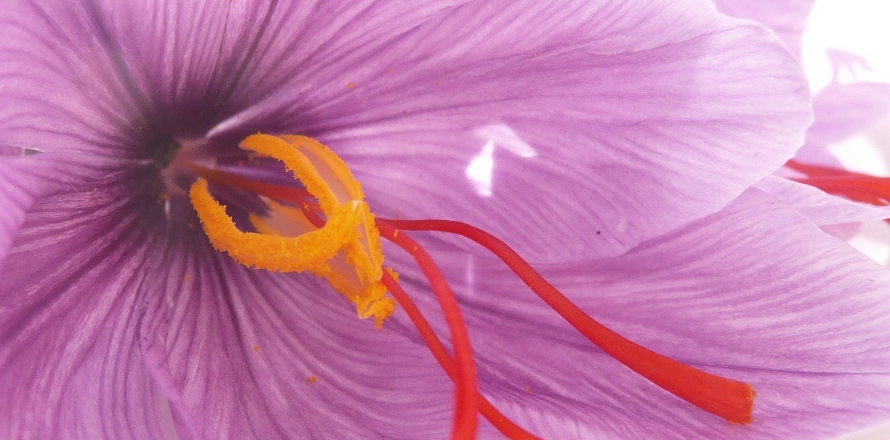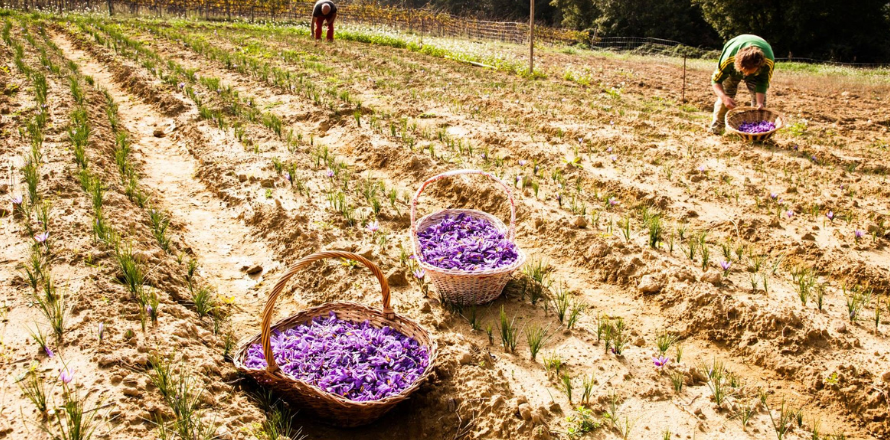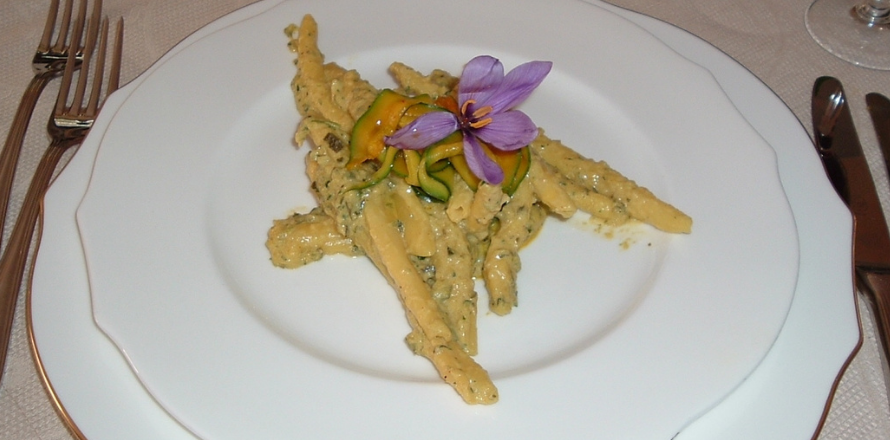
From Asia to Umbria: the long journey of a plant with magical properties.
The origin of saffron is certainly Asia Minor, the discovery of its infinite properties and use goes back centuries. Already known at the time of the Mycenaean civilisation to the extent that it was depicted in the Palace of Knossos, used in ancient Egypt as documented in the Ebers Papyrus, cited in the Bible and the Indian Vedas.
The ancient Greeks and Romans called saffron the 'Crocus plant' and extolled all its properties: according to mythology, Zeus' bed was made of Crocus, Lotus and Hyacinth flowers.
The doctor Hippocrates used it to treat rheumatism, toothache and gout, the Romans experimented with it in the kitchen and the Arabs spread it in Spain, changing its name to "safra", the yellow colour of the stigmas after cooking.
In Italy in the Middle Ages its pharmacological properties were exalted to the maximum, its use in cooking spread everywhere and it was widely used as a dyeing plant for wool, silk and for painting throughout the Renaissance.
It was considered to all intents and purposes the queen of spices until the discovery of America when other plants spread.

Saffron's history is linked to Umbria as early as the 13th century, as documents of the time attest.
The statute of Perugia forbade cultivation by foresters in the lands of Città della Pieve and Montone where the economy was based on the production and dyeing of fabrics.
It is widespread in the Spoletino, Eugubino, Folignate, Orvietano and Valnerina areas, where there is evidence of saffron being exchanged for precious gems.
A man of letters from Spoleto who lived at the court of the Borgias, Pierfrancesco Giustolo, published in 1510 "De Croci Cultu", a poem which provides much information on the cultivation of saffron.
Without any apparent explanation, as the years go by, crops disappear, old eating habits change and, consequently, so do the crops. The least popular saffron was imported from Spain.
After centuries of silence, at the end of the 1970s, the agronomist Alberto Vigano planted some saffron bulbs from Spain in Città della Pieve.
It was love at first sight also for other growers who began this experience until they established the Consortium "Il Croco di Pietro Perugino - Zafferano di Città della Pieve", part of the Italian Association together with the Associations of Gubbio and Cascia.

Saffron is truly a "precious gem", not only in terms of its appearance and properties, but also because it takes about 200 red pistils to make one gram of saffron.
Saffron is to all intents and purposes one of the excellences of Umbrian food: an enveloping and refined spice which enhances dishes, enriches their flavour and makes them particularly beautiful!
There are many products that can be made with saffron, from honey to sauces and liqueurs.
Discover the lands of saffron, a journey through taste:
The treasures of Città della Pieve: Perugino's art and saffron
Città della Pieve: nature and outdoors
Città della Pieve: flavours and ancient traditions